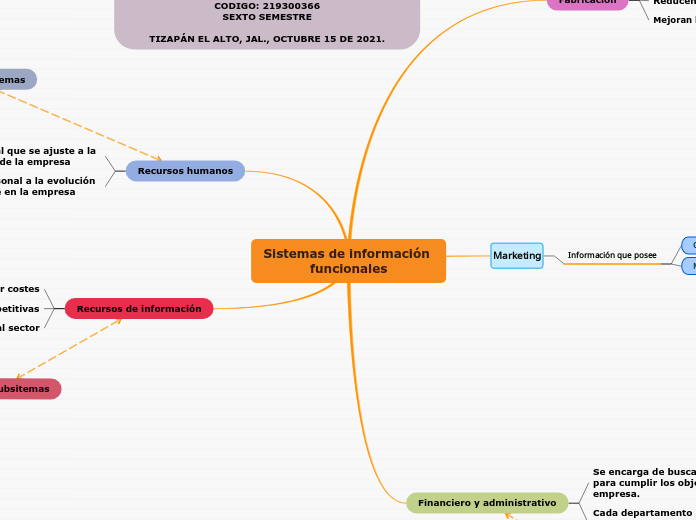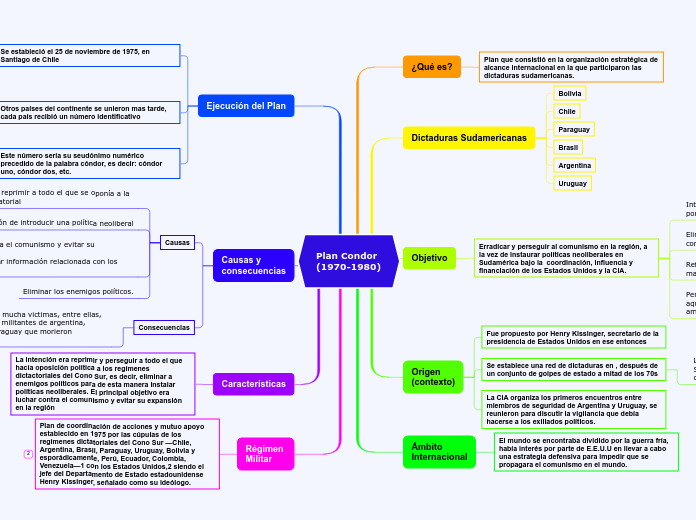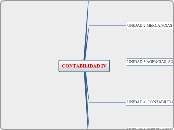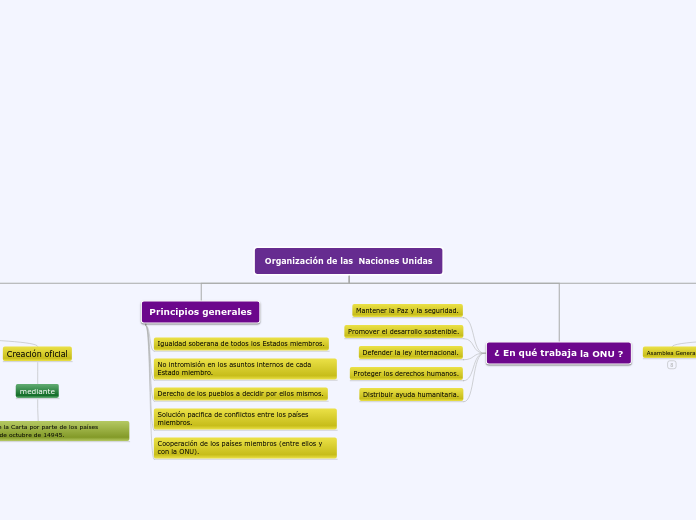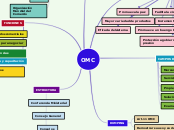UNIVERSIDAD DE GUADALAJARA
SISTEMA DE UNIVERSIDAD VIRTUAL
LICENCIATURA EN TECNOLOGÍAS E INFORMACIÓN
CURSO.
CONCEPTUALIZACIÓN DE SISTEMAS DE INFORMACIÓN.
UNIDAD 3.
TEORÍA DE SISTEMAS.
ACTIVIDAD 3.
SISTEMAS DE INFORMACIÓN FUNCIONALES.
ASESORA: MARÍA DEL PILAR GURROLA TOGASI
ALUMNA: GLIDIOLA MATA VALDOVINOS
CODIGO: 219300366
SEXTO SEMESTRE
TIZAPÁN EL ALTO, JAL., OCTUBRE 15 DE 2021.
Bibliografía
Lapiedra, R. (2011). Introducción a la gestión de sistemas de información en la empresa. Obtenido de http://repositori.uji.es/xmlui/bitstream/handle/10234/24161/S53.pdf?sequence=1
Servicios
Están enfocados a los servicios internos y externos
Hacienda
Proveedores
Ofrecen formatos para personal interno y externo
De control
Permite implementar estrategias a través del presupuesto a un año fiscal.
Administración de fondos
Permite realizar el seguimiento de los flujos monetarios y posibles inferencias.
Previsiones
Se utilizan modelos estadisticos para elaborar pronosticos.
Herramientas de gestión
Para consolidación de datos y toma de decisiones.
Para el control y mejora de procesos.
Para el registro de datos en cualquier departamento.
Control interno
Permite analizar datos.
Detectan problemas internos y externos.
Contabilidad
Contabilidad de facturas.
Asignación de crédito al cliente.
Se encarga de la facturación.
Costos
Es utilizado para mantener los costes de producción.
El objetivo de estos sistemas es el cero defectos.
Inventarios
Mejora la planificación de prioridades y coordinación entre departamentos.
Permite uan calendarización de actividades.
Da una buena planificación de necesidades de materiales.
De producción
Permiten reducir costos con un alto grado de calidad y precisión.
Permiten una retroalimentación continúa.
Dan un mejor control de existencias y producción enfocada a la demanda.
Recolectan las necesidades de información.
Consta de varios subsistemas
Subsistema de mezcla integrada
Ayuda en la toma de decisiones estratégicas.
Subsistemas de precios
Fija precios de los costos de las funciones.
Subsistemas de distribución
Integra la información de proveedores y clientes.
Subsistemas de promoción
Sirve para la conexión entre empresas y clientes.
Subsistemas de producto
Desarrolla tácticas y estrategias en cada fase.
Los recursos principales son:
Data warehouse: Concentra toda la información en una sola fuente.
Data mining; analiza la información para hacer predicciones de comportamientos y tendencias.
Realizar simulaciones
Analizar y elaborar informes
Obtener información y resultados
Estos datos son utilizados para:
Hacer proyecciones a corto y largo plazo
Analizar a los competidores y sus productos
Cuota y potencial del mercado
Información de nuevos productos
Funcionan en forma continúa y en tiempo real
Maneja dos tipos de subsistemas
Subsistemas de salida
Sistema de soporte a ejecutivos
Sistema de soporte de decisiones
Sistemas de información gerencial
Basados en el conocimiento
Subsistemas de entrada
Estudios e investigación de mercados.
Subsistemas propios como clientes, precios, datos generales...
Los bases son proporcionados por las bases de datos
Tipos de subsitemas
Salidas
Auditoría
Realiza un control continuado de los equipos, programas y estrategía de la organización.
Ofrece un estado actualizado del software y hardware, así como los recursos humanos.
Gestión de serguridad
Identifica calidad de servicio.
Ayuda a identificar vulnerabilidades en la red
Crea barreras de acceso para los ataques informáticos
Servicios al usuario
Anticipa herramientas para mejorar la eficiencia y eficacia de los usuarios.
Da acceso a los usuarios a los programas que necesitan.
Ofrece información al usuario sobre las distintas herramientas
De software
Describe el nivel de actualización y necesidades de los programas.
Describe los programas informáticos que existen en la empresa.
Infraestructuras
Los sistemas pasan de ser un coste al negocio a un servicio fundamental.
Gestiona los recursos materiales en TI que posee la empresa.
Entradas
Administran la capacidad de componentes
Administrar la capacidad del servicio
Gestionar la capacidad del negocio
Tipos de subsistemas
Salida
Integrados de aplicaciones
Servicio al cliente
Calidad
Gestión de materiales
Control de inversiones
Legislativo
Proporciona información de las actualizaciones en las leyes gubernamentales
Remuneración
Tratan la remuneración salarial del empleado
Entrada
Inteligencia
Analiza la relación de la empresa y sindicatos
Vigila las relaciones de sus competidores con sus empleados y clientes
Investigación
Busca nuevos empleados
Sistemas de información funcionales
Rivers have always been essential for human life and settlement. A source for drinking, the source of food, and a way to transfer goods from one place to another. They are essential in the environment of rainforest and wetlands.
Recursos de información
The Yangtze holds the title of Asia’s longest river. The Yangtze has a momentous place in China’s history and culture, providing some of the country’s most fertile land as well as some of its most artistically inspiring scenery.
Where the Mekong river runs, the land is incredibly verdant shaping one of the richest areas of biodiversity on the planet. Thousands of species call its shores and waters home. Long an essential trade route the Mekong passes through, or close to, some of the region’s most important cities, including Vientiane, Phnom Penh and Saigon.
Permite una adaptación al sector
Da ventajas competitivas
The Mekong is a trans-boundary river in Southeast Asia. Its estimated length is 4,350 km.
From the Tibetan Plateau, the river runs through China's Yunnan Province, Myanmar, Laos, Thailand, Cambodia, and Vietnam.
The Mekong rises as the Za Qu and soon becomes known as the Lancang (Lantsang) in the 'Three Rivers Source Area' on the Tibetan Plateau in the Sanjiangyuan National Nature Reserve. It approaches and empties into the sea through the Mekong Delta. Tributaries: Nam Khan, Tha, Nam Ou, Mun, Tonle Sap, Kok, Ruak.
Ayuda a reducir costes
The Yangtze or Yangzi is the longest river in Asia and the longest in the world to flow entirely within one country (Qinghai, Tibet, Yunnan, Sichuan, Chongqing, Hubei, Hunan, Jiangxi, Anhui, Jiangsu, Shanghai provinces). It rises in the northern part of the Tibetan Plateau and flows 6,300 km in a generally easterly direction to the East China Sea.
Tributaries: Yalong, Min, Tuo, Jialing, Han, Wu, Yuan, Zi, Xiang, Gan, Huangpu.
In mid-2014, the Chinese government announced it was building a multi-tier transport network, comprising railways, roads, and airports, to create a new economic belt alongside the river.
Recursos humanos
The Volga is the longest river in Europe. The waters of the Volga are used to irrigate the steppe regions of southern Russia. Because of its importance in the country, the Volga has mythological status in Russia, and many iconic sites are found along its banks
The Danube is the second-longest river in Europe. Travelers can experience many of the river's sights by embarking on a cruise along its waterways. Danube River Cruises, which are offered by Viking Cruises, typically stop in Cologne, Budapest, Nuremberg, Belgrade and Krems. Following the river is a way to experience several Eastern European cities in one trip. Famous monuments, such as the Hungarian Parliament, have been erected on its coast.
Adapta al personal a la evolución que surge en la empresa
The Danube is located in Central and Eastern Europe.
The Danube flows through 10 countries, more than any other river in the world. Originating in the Black Forest in Germany, the Danube flows southeast for 2,850 km, passing through or bordering Austria, Slovakia, Hungary, Croatia, Serbia, Romania, Bulgaria, Moldova and Ukraine before draining into the Black Sea. The mouth of the Danube is the Danube Delta. The greater part of the Danube Delta lies in Romania, with a small part in Ukraine (Odessa Oblast).
Tributaries :Iller, Lech, Altmühl, Naab, Regen, Isar, Inn, Ilz, Enns, Morava, Rába, Váh, Hron, Ipeľ, Sió, Dráva, Vuka, Tisza, Sava, Tamiš, Great Morava, Mlava, Karaş, Jiu, Iskar, Olt, Osam, Argeș, Ialomița, Siret, Prut.
Busca personal que se ajuste a la filosofía de la empresa
The Volga is the longest river in Europe with a catchment area of 1,350,000 square km.
Eleven of the twenty largest cities of Russia, including the capital, Moscow, are located in the Volga's drainage basin. Rising in the Valdai Hills 225 meters above sea level northwest of Moscow and about 320 km southeast of Saint Petersburg, the Volga heads east past Lake Sterzh, Tver, Dubna, Rybinsk, Yaroslavl, Nizhny Novgorod, and Kazan. From there it turns south, flows past Ulyanovsk, Tolyatti, Samara, Saratov, and Volgograd, and discharges into the Caspian Sea.
Tributaries: Kama, Oka, Vetluga, and Sura. The Volga Delta has a length of about 160 kilometers and includes as many as 500 channels and smaller rivers.
Financiero y administrativo
Cada departamento se encarga de administrar los recursos que se les proporcionan.
Se encarga de buscar los recursos para cumplir los objetivos de la empresa.
Marketing
There are four major rivers in Africa: the Nile, the Zambezi, the Congo, and the Niger. The Nile is one of the longest rivers in the world.
The Zambezi's most noted feature is Victoria Falls. Other notable falls include the Chavuma Falls at the border between Zambia and Angola, and Ngonye Falls, near Sioma in Western Zambia.
Información que posee
Mercados
Clientes
Fabricación
North America
In the 18th century, the river was the primary western boundary of the young United States, and since the country's expansion westward, the Mississippi River has been widely considered a convenient dividing line between the Eastern, Southern, Midwestern United States, and the Western United States.
South America
Amazon River, the greatest river of South America and the largest drainage system in the world in terms of the volume of its flow and the area of its basin.
Mejoran los rendimientos
Reducen costes
Main tributaries - Marañón, Napo, Japurá/Caquetá, Rio Negro/Guainía, Putumayo, Trombetas, Ucayali, Javary, Juruá, Purús, Madeira, Tapajós, Xingu.
The Amazon and its tributaries flow through the countries of Peru, Bolivia, Venezuela, Colombia, Ecuador, and Brazil before emptying into the Atlantic Ocean 6, 437 km (4,000 miles) from the Amazon's headwaters high in the Andes mountains of Peru.
Mejoran la eficiencia
Its source is Lake Itasca in northern Minnesota and it flows generally south for 2,320 miles (3,730 km) to the Mississippi River Delta in the Gulf of Mexico.
The main stem is entirely within the United States. Tributaries - St. Croix River, Wisconsin River, Rock River, Illinois River, Kaskaskia River, Ohio River, Minnesota River, Des Moines River, Missouri River, White River, Arkansas River.
The river either borders or passes through the states of Minnesota, Wisconsin, Iowa, Illinois, Missouri, Kentucky, Tennessee, Arkansas, Mississippi, and Louisiana.
